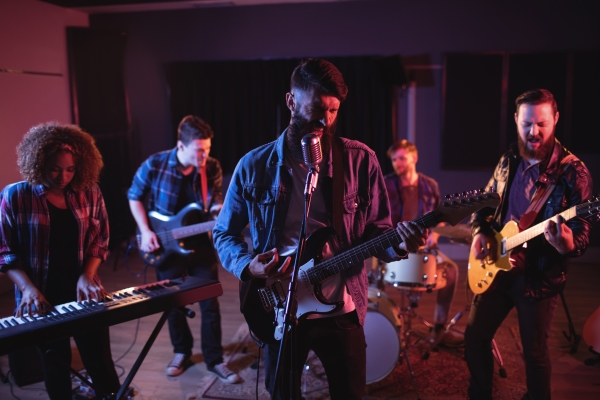Live Music and Economic Recovery in the UK: How Concerts Are Powering a Cultural and Financial Revival
Introduction
When the COVID-19 pandemic struck in 2020, the UK’s live music sector was one of the hardest hit. Venues shut their doors, festivals were cancelled, and countless jobs tied to touring, events, and production disappeared almost overnight. For many, the silence was not just cultural—it was economic devastation.
Fast forward to 2025, and the picture looks very different. According to recent figures, UK consumer spending on live music hit a record £6.68 billion in 2024, representing a 9.5% year-on-year rise. This surge is not only a cultural milestone but also a vital contributor to the country’s broader economic recovery. Major tours—particularly Taylor Swift’s monumental Eras Tour—have helped drive demand to unprecedented levels, while domestic festivals and smaller events are benefiting from renewed public enthusiasm.
But beneath the headlines of record-breaking revenue lies a more complex story. While big-name artists and large arenas thrive, grassroots venues and independent promoters continue to face challenges. This blog will explore how live music is shaping the UK’s economic revival, why certain segments of the industry are thriving while others struggle, and what the future holds for the live music landscape.
The Scale of Recovery
The UK music industry has always been a cornerstone of cultural life, but the last two years have seen it become an economic powerhouse. The £6.68 billion in live music spending in 2024 represents more than just ticket sales. That figure encompasses hospitality, tourism, transport, and countless ancillary services that thrive around live performances.
For example, a single stadium concert doesn’t just benefit the artist and venue. Hotels fill with visitors, restaurants see a surge in bookings, taxis and public transport services get a boost, and even retail benefits from footfall. The ripple effect of a major tour stop can inject millions into a local economy overnight.
The Eras Tour is the perfect case study. Taylor Swift’s UK shows in 2024 were so popular that they not only boosted national ticket sales but also created what economists dubbed the “Swift lift”—a measurable spike in consumer spending in host cities. According to local reports, hotel occupancy rates skyrocketed, and many businesses saw record sales during concert weekends.
Why Live Music Matters to Economic Recovery
The significance of live music in the UK goes far beyond cultural enrichment. It plays a tangible role in the country’s economic revival post-pandemic. Here’s why:
-
Job Creation
The live music ecosystem supports a vast array of jobs—from performers and promoters to sound engineers, lighting technicians, stagehands, security staff, ticketing agents, and more. The resurgence of concerts means thousands of people are back in work. -
Tourism Boost
Music tourism is a key growth driver. Fans often travel across regions—or even internationally—to attend shows. According to UK Music’s industry reports, music tourism generated billions annually even before the pandemic. The resurgence of international tours has reignited this sector. -
Cultural Export Power
British music has long been one of the nation’s most successful exports. By fostering a vibrant live scene at home, the UK continues to strengthen its cultural brand abroad, reinforcing its reputation as a global hub for music. -
Spillover to Other Sectors
As mentioned, live music events stimulate local economies. From transport networks to hospitality, the benefits extend far beyond the concert hall.
The Big Players Driving Growth
While the overall industry is booming, certain artists and tours have had an outsized impact on revenue growth.
-
Taylor Swift’s Eras Tour: By far the most significant driver of spending in 2024. Swift’s shows were not just concerts—they were economic events, with fans traveling long distances, often spending hundreds or even thousands of pounds on tickets, merchandise, and related activities.
-
UK Festivals: Glastonbury, Reading & Leeds, Wireless, and countless regional festivals have roared back with record attendance. Their popularity underlines the UK’s deep-rooted festival culture, which remains a draw for international visitors.
-
Legacy Acts: Artists like Elton John, Coldplay, and The Rolling Stones continue to command massive audiences, often selling out stadiums across the country. These acts sustain demand among older demographics, further broadening the live music market.
The Grassroots Challenge
Despite these positive headlines, not all areas of the live music ecosystem are benefiting equally. Grassroots venues—small clubs, pubs, and local stages—remain under severe pressure.
-
Rising Costs
Energy bills, rent, and staffing costs have soared, squeezing already tight margins. Unlike major arenas, smaller venues lack the economies of scale to absorb these expenses. -
Competition for Attention
With mega-tours dominating media coverage and consumer budgets, smaller shows often struggle to attract audiences. Younger fans may prioritize saving for a big stadium experience over attending multiple local gigs. -
Closure Risk
According to the Music Venue Trust, dozens of grassroots venues have shut down since the pandemic. This trend poses long-term risks for the industry, as these venues are crucial for developing new talent.

Cultural Impact of Recovery
The revival of live music isn’t just about economics—it’s also about social cohesion and cultural identity. After years of isolation and uncertainty, concerts and festivals have become powerful communal experiences. People aren’t just attending shows for the music; they’re seeking connection, celebration, and belonging.
This cultural revival has psychological benefits too. Mental health studies suggest that live music experiences contribute positively to well-being, reducing stress and fostering a sense of community. In this sense, the live music boom is also aiding the UK’s social recovery from the trauma of the pandemic.
Government and Policy Support
Policymakers are beginning to recognize the strategic importance of live music. Initiatives to support cultural industries, tax relief programs, and targeted grants have played a role in stabilizing parts of the sector. However, industry leaders argue that more needs to be done to protect grassroots venues and ensure a sustainable ecosystem from the bottom up.
There are calls for:
-
Targeted Funding to support independent venues.
-
Business Rate Relief to ease the financial pressure on small operators.
-
Regulation on Ticketing Practices to combat scalping and inflated resale prices, which frustrate fans and reduce accessibility.
The Role of Technology
Technology is reshaping the live music landscape in ways that enhance both consumer experience and revenue generation.
-
Ticketing Innovations
Dynamic pricing models and blockchain-backed tickets are being tested to improve transparency and reduce fraud. -
Hybrid Experiences
Livestreamed concerts remain popular, particularly for fans unable to travel. Some artists now offer hybrid models, combining in-person shows with digital access. -
Fan Engagement
Apps and wearable devices are enhancing the concert experience, from cashless payments to augmented reality stage effects. -
Data Analytics
Promoters and artists now have access to detailed audience data, enabling better tour planning, targeted marketing, and improved fan experiences.
The Future Outlook
Looking ahead, the live music sector in the UK appears poised for continued growth, but with important caveats:
-
Stadium Tours Will Dominate: Major international artists will continue to drive revenue through blockbuster tours.
-
Festival Culture Will Endure: UK festivals are deeply ingrained in cultural identity, ensuring their continued success.
-
Grassroots Uncertainty: Without intervention, smaller venues may continue to close, potentially weakening the talent pipeline.
-
Global Expansion: As UK acts tour globally and foreign artists flock to the UK, the country’s reputation as a live music capital will remain secure.
Conclusion
The revival of live music in the UK is both a cultural triumph and an economic lifeline. With consumer spending hitting £6.68 billion in 2024, concerts and festivals are proving vital to the nation’s broader recovery. From the stadium-filling spectacle of Taylor Swift’s Eras Tour to the bustling fields of Glastonbury, live music is delivering joy, connection, and prosperity on a scale rarely seen before.
Yet the story is not one of unqualified success. While the top end of the industry flourishes, grassroots venues remain vulnerable, threatening the future pipeline of UK talent. The challenge for policymakers, industry leaders, and fans alike is to ensure that the recovery is inclusive and sustainable.
In the end, live music is about more than money—it’s about people coming together to share in something greater than themselves. As the UK continues its journey of economic and cultural recovery, the roar of the crowd may just be its most powerful anthem.


